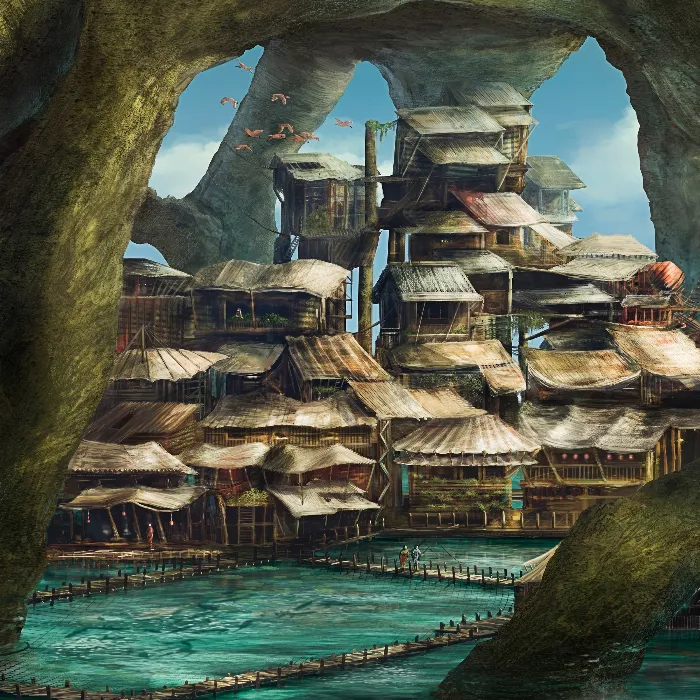The art of digital painting opens up fascinating possibilities, especially when it comes to equipping 3D templates with realistic textures. In this section, you will learn how to effectively integrate and adjust shadow layers created in SketchUp to make your digital models appear more vibrant. The key lies in the right combination of light and shadow as well as the adjustment of textures to achieve a harmonious overall picture.
Key Insights
- The adjustment of shadow and light effects is crucial for the realism of your digital models.
- Working with multiple layers gives you more control and flexibility when texturing.
- The proper addition and editing of colors as well as darkening with different tools improves the depth and plasticity of your objects.
Step-by-Step Guide
To create a realistic model, several steps are necessary, which we will now go through in detail. Each of these steps will help you optimize the texture and light.
Step 1: Setting Up the Workspace
Before you start texturing, it's important to create the right foundation in SketchUp. Make sure you have correctly created and inserted the shadow layer into your model. Learn how the different textures work together to open up accurate shadow-light relationships.
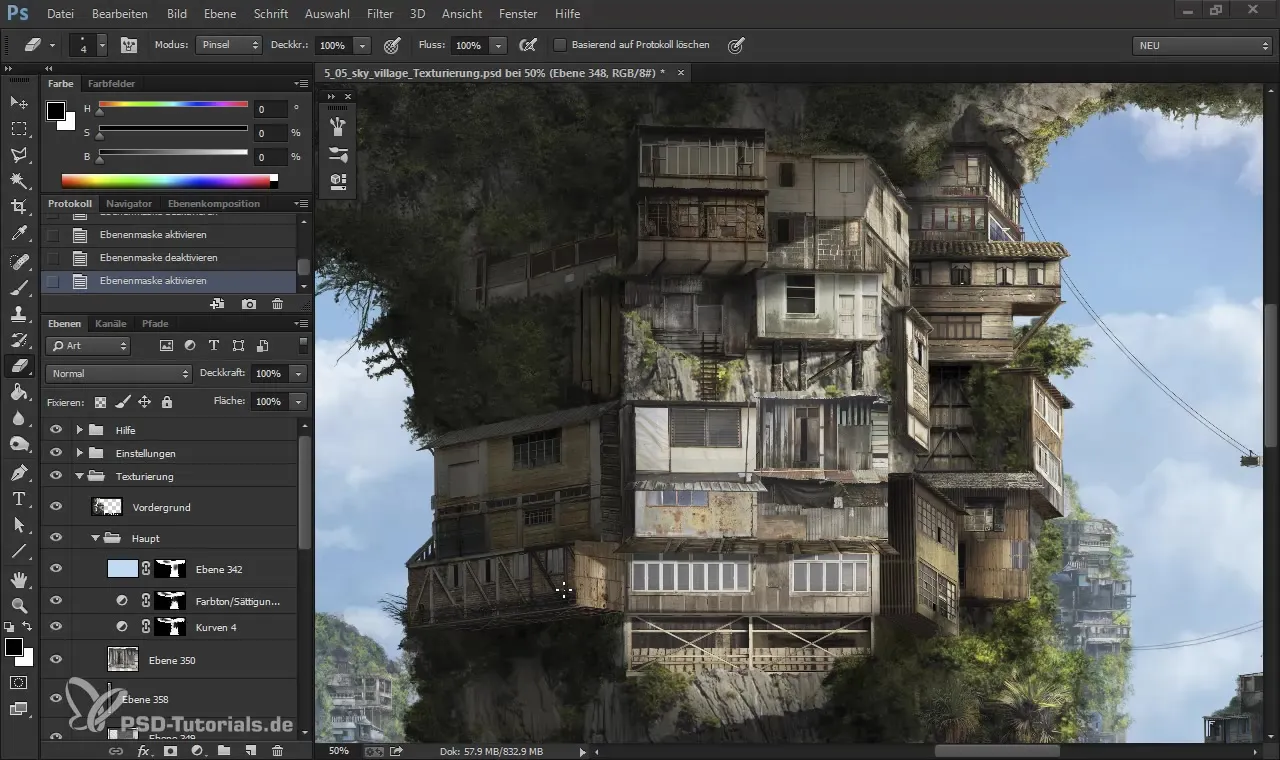
Step 2: Adjusting the Textures
You begin by optimizing the existing textures. Turn off the settings so you can edit the textures directly. It is important to carefully select and, if necessary, adjust the integrated textures to achieve a harmonious overall picture. Experiment with the size and shape of the textures to achieve the best effect.
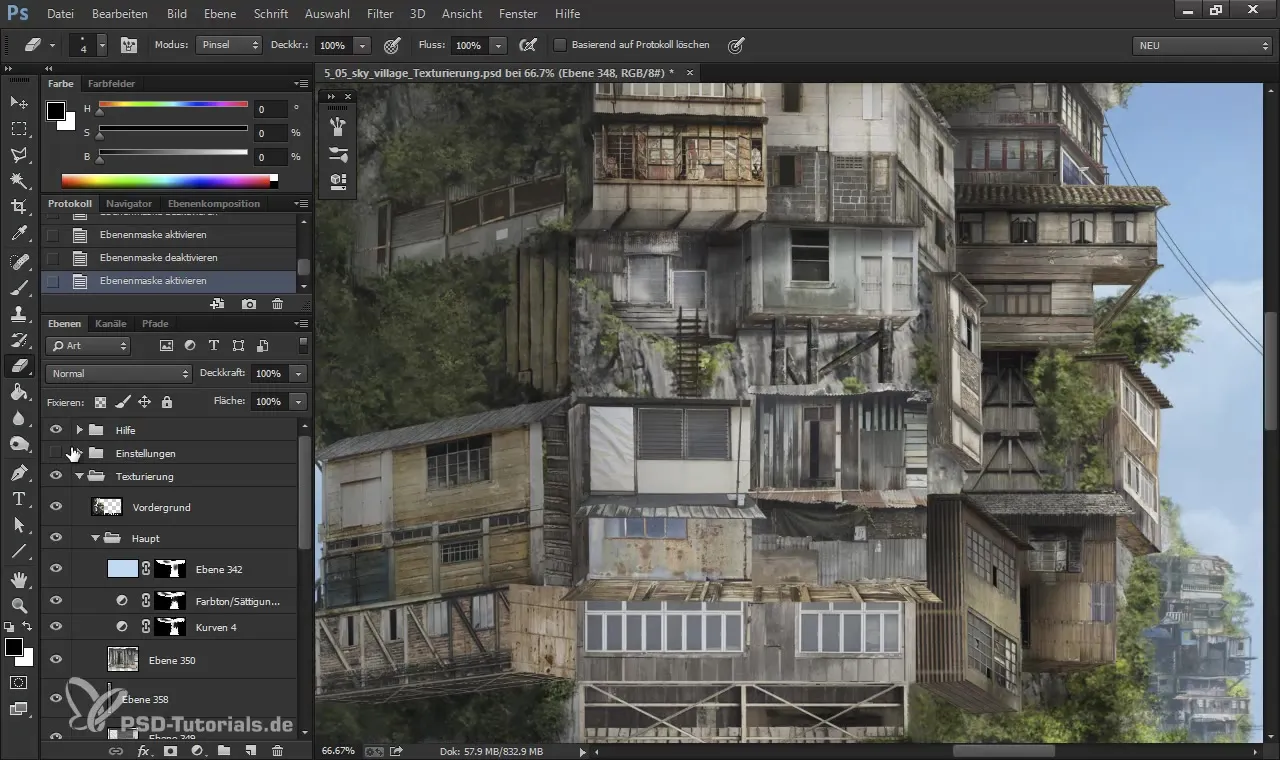
Step 3: Working with Shading
To bring your textures to life, add shadows. Use the burn tool to darken the edges of your objects slightly, which leads to a more realistic light ratio. The shadows should always correspond to realistic circumstances, depending on the light source in the model.
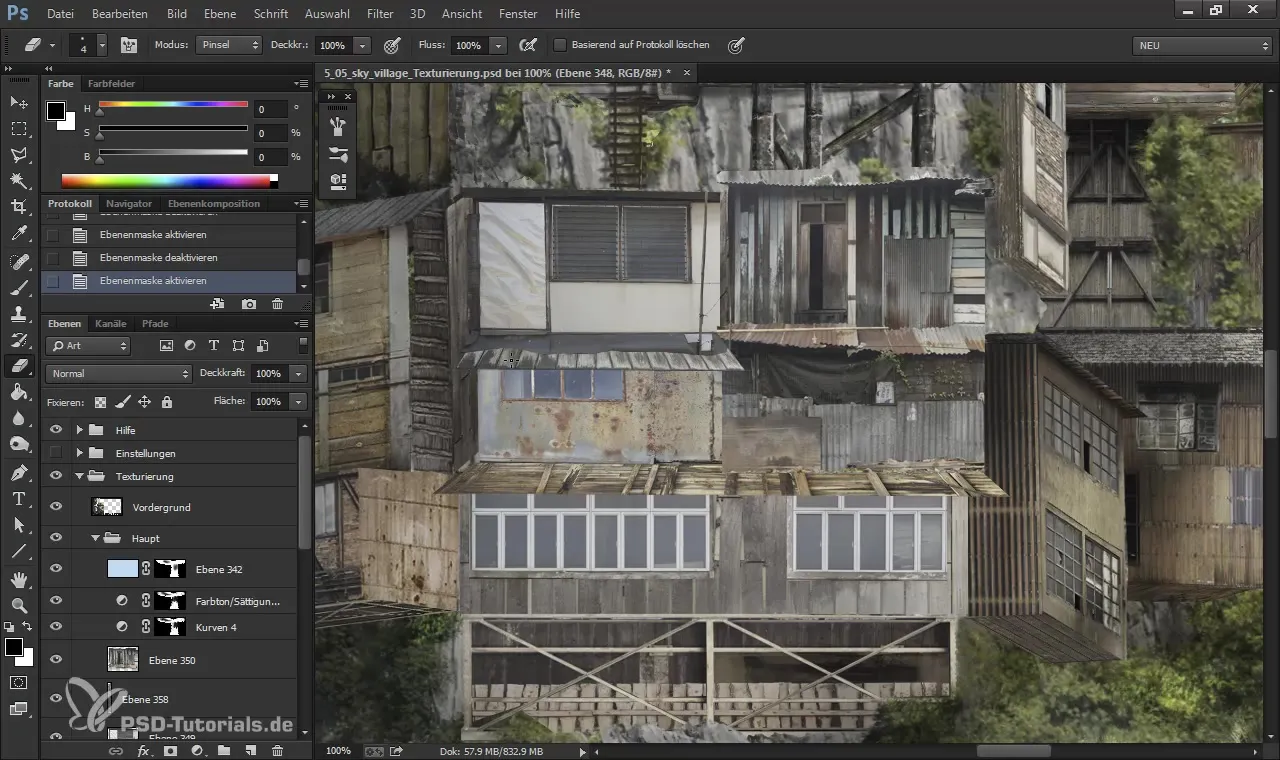
Step 4: Using Gradients
An important step is the use of gradients and shading to create depth. Experiment with different shades to make the texture more vivid. While working with a gradient, ensure that the colors harmoniously match to achieve a natural appearance.
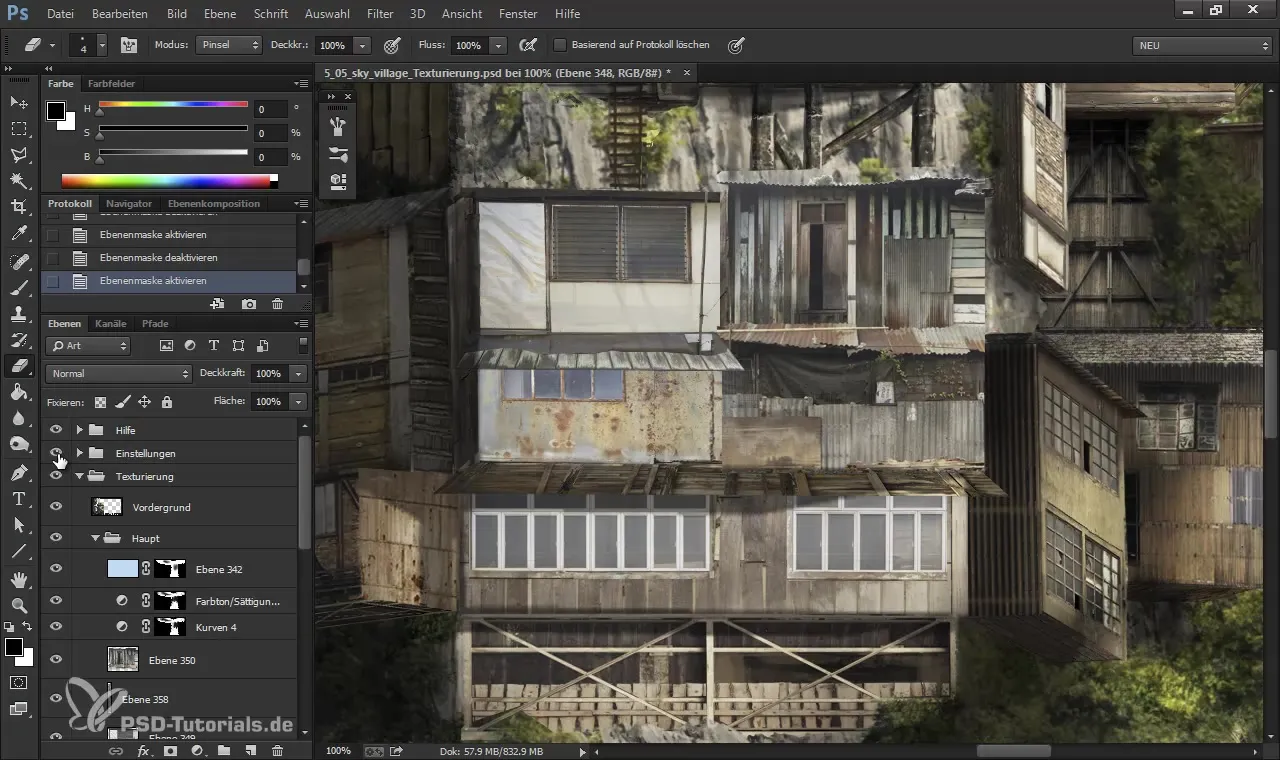
Step 5: Making Fine Adjustments
Now that the basic textures are set, edit the details. This might include adding small accents with a fine brush stroke or adjusting individual edges. Ensure that the transitions between the textures are smooth. You can also mask the layers to achieve the best results.
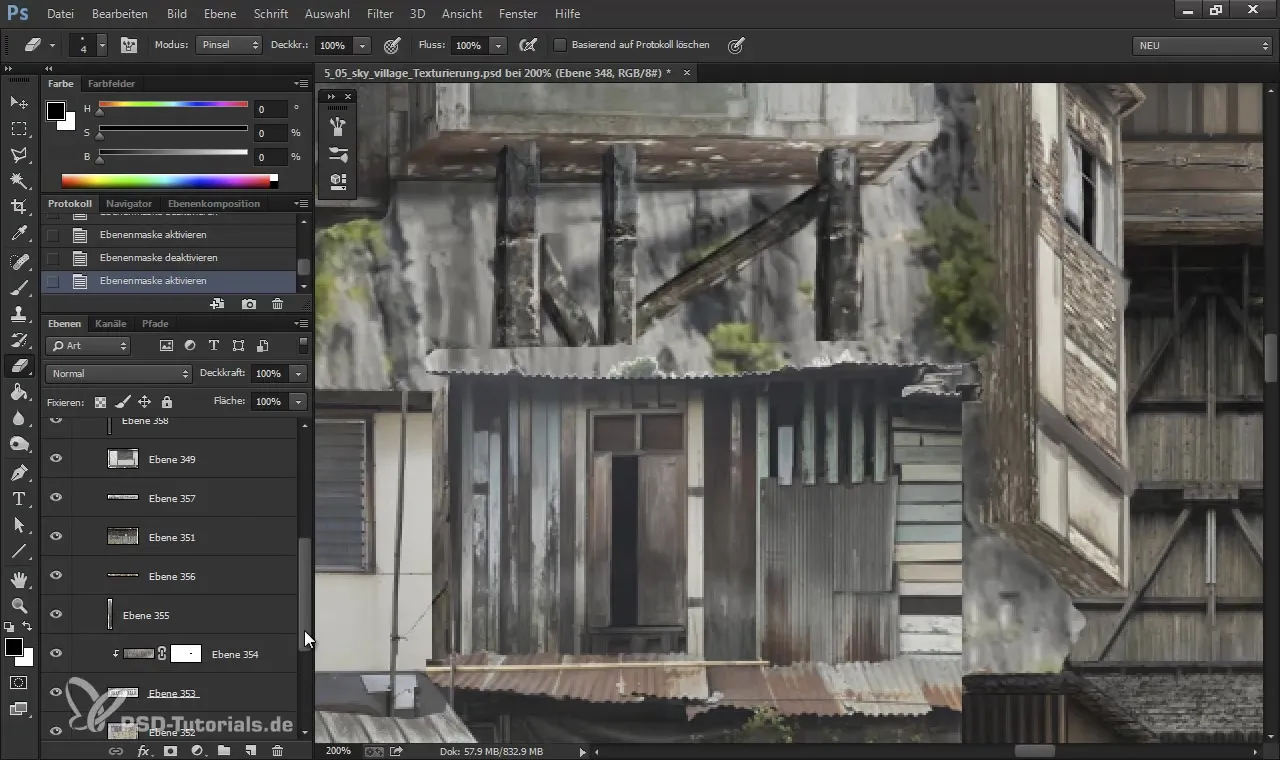
Step 6: Using Curves
Use curves to influence the overall light conditions in your model. This gives you the ability to improve the brightness and contrast of your textures significantly. Apply the curves specifically to the lighter parts of the model to create more depth.
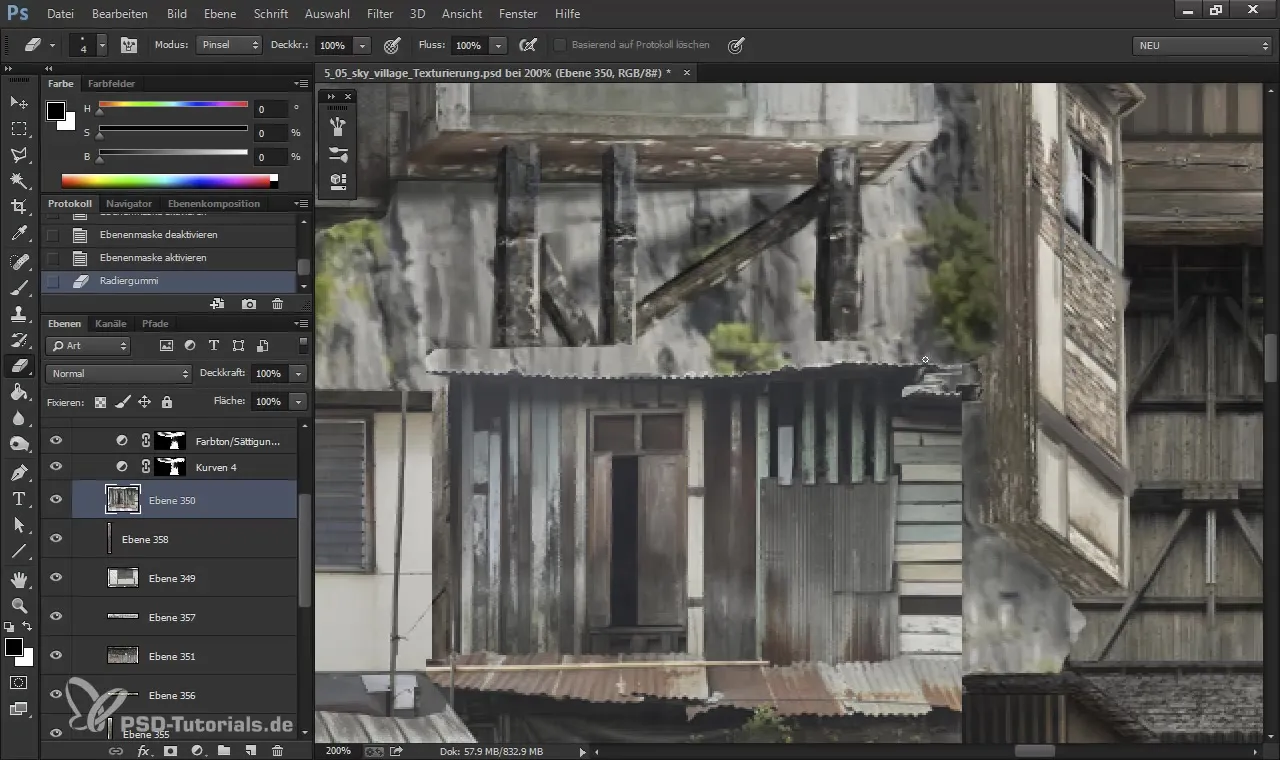
Step 7: Finalizing the Shadows
In the final step, focus on optimizing the shadow binding. In this context, it is helpful to work with layer masks. This allows you to select specific areas and shade them afterwards to achieve a final refined look.
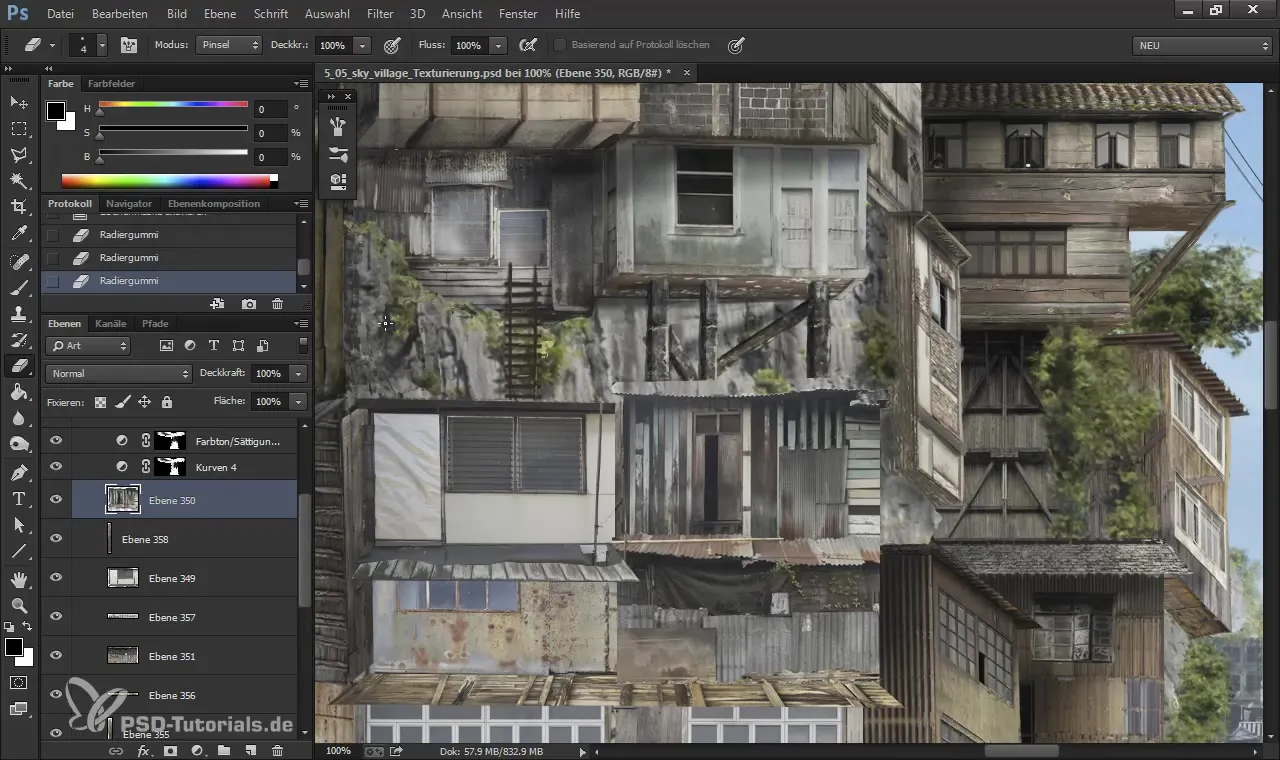
Summary – Digital Painting and Matte Painting: Texturing with 3D Templates (Part 2)
The proper understanding and application of the techniques mentioned above are crucial for producing impressive digital models. The combination of correct texturing, lighting, and shadow processing gives your model a realistic and appealing appearance. Be sure to be creative and experiment with different textures and effects to find your unique artistic touch.
Frequently Asked Questions
How can I adjust the textures in SketchUp?You can change the textures directly in editing mode and adjust properties such as size and transparency.
What are the best tools for texturing in digital painting programs?Tools like the burn tool and gradient options are excellent for creating depth and realism.
How can I create realistic shadows?Be sure to consider the light source and work with transparent layers and gradients to achieve realistic shadows.
How can I adjust the colors of my textures?Use color curves and experiment with different shades to achieve the desired balance.
Is it better to work with layers or to texture everything on one layer?Working with multiple layers gives you more flexibility and allows for better adjustment and control over your textures.
